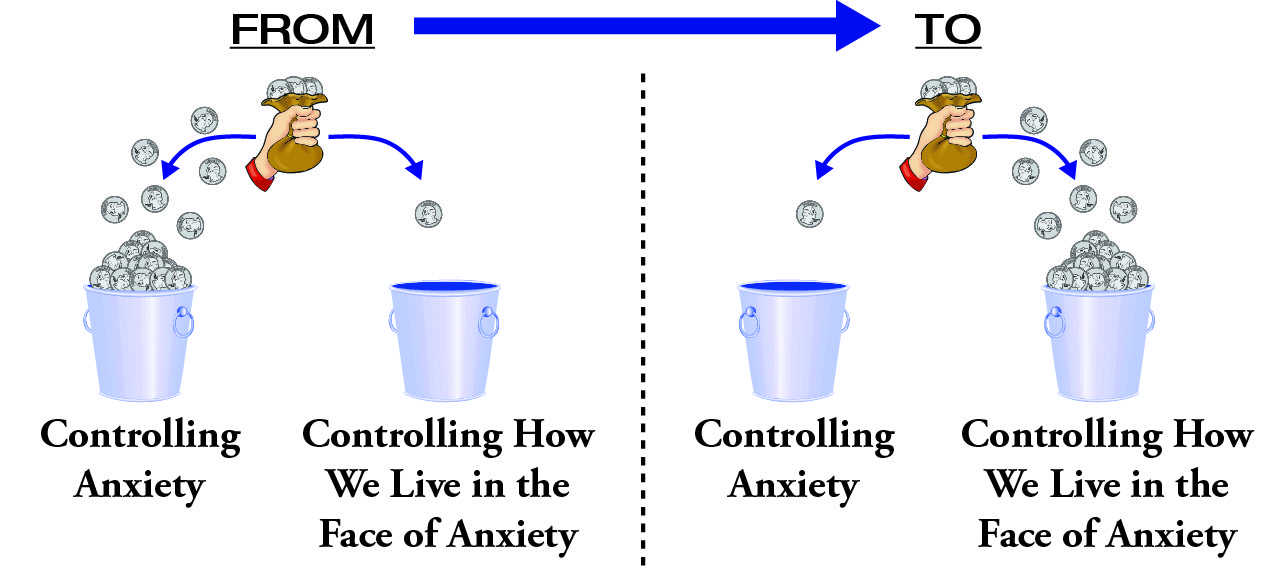Courage (C)
“Courage.” The word is familiar, but often misused. Images of gallant knights come to mind, laughing fearlessly as they gallop into battle.
Yet soldiers and first responders know that courage is not the absence of fear. It is the act doing what needs to be done when we are in fear’s presence. Experts of various kinds endorse this perspective:
“Courage is being afraid but going on anyhow.”
– Dan Rather
“Courage is not the absence of fear. It is the ability to act in the presence of fear.”
– Bruce Lee
“I learned that courage was not the absence of fear, but the triumph over it.”
– Nelson Mandela
Taking care of business in spite of it. “Playing ball” in the face of it. Staying on one’s personal course whether it arises or not. To prevent anxiety from limiting our lives, we need not remove it from our lives. Rather, we can purposely practice courage in a common scenario: When we are at Point A, our priorities are at Point B, and anxiety is in the middle.
Unto itself, anxiety only has a single power: the power to make us feel uncomfortable on a short-term basis. Yet avoidance grants anxiety a wide array of bonus powers. The power to disrupt important life events. The power to determine what we say with our mouths and what we do with our feet. The power to make us feel uncomfortable on a long-term basis
Courage strips anxiety of these avoidance-acquired powers, transforming it back into a feeling that will fade over time. This returns us to the subject of control.
Much of resolving anxiety problems — and much of effective living, in general — comes down to the management of control. More specifically, it requires assuming control in some areas and relinquishing control in others.
Pretend that we get an allotment of control in our lives, and say it looks like a sack of quarters. These quarters represent all the things we can do and everything we can make happen.
Now imagine putting quarters in one of two buckets. The first is a “controlling anxiety” bucket. We allocate quarters to this bucket by trying to control how long anxiety lasts, how strong it feels, or how often it arises (which usually backfires).
The second receptacle is a “controlling how you live in the face of anxiety” bucket. We add quarters to this bucket by behaving in effective ways within anxiety’s company; by living as we would if anxiety were absent.
On one level, courage is an exercise of control reallocation. With practice and guidance as needed, we decrease our attempts to control anxiety . . . and increasingly control how we live in
anxiety’s presence.
We invest in the wrong project by struggling to control anxiety: a project that is not necessary and does not work.
Yet there is an alternative project in which we can and should invest. We can control our hands and legs when we are feeling anxious instead of trying to control anxiety itself. By reallocating control in such a manner, we greatly reduce the control anxiety has over us.
In cognitive-behavioral therapy (CBT), though, courage is not a vague idea or esoteric concept. It is something we practice systematically through step-by-step “exposure.”
Exposure involves steering toward anxiety in a purposeful manner, or intentionally going to find the feeling we usually try to avoid. Prior to completing exposures, some patients are so fearful of germs they won’t play with their children. Or so concerned about traveling they won’t go a block from their homes. A few months later, they are playing games of patty cake and booking trips to Europe. Exposure, research shows, rapidly yields results. It is an exercise in courage, and its benefits can be breathtaking.
Unfortunately, a blog cannot give justice to the exposure process. Consult with a licensed professional to learn more about this highly effective approach.
Dylan M. Kollman, PhD
dkollman@realanxietysolutions.com








